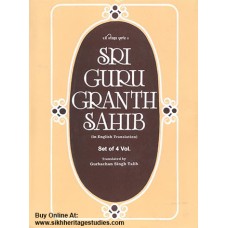While making this translation, which has inevitably taken a number of years to complete, the background and the objectives indicated above have been kept steadily in view. The perceptive reader will not miss certain specific features and emphasis of the translated text. Certain principles that have been kept in view in making the translation, may here be briefly stated.
Attempt has been made to render closely the original text in detail, taking into account the verbal nuances, the vision enshrined in it and the sensitive poetic features. Along with the features just mentioned, an unobtrusive rhythmic structure has been adopted for the translated text, to aid an emotional and imaginative approach to the original, which is meant to inspire and arouse the self to attempt to live the spiritual experience.
In finding parallels for concepts and philosophical terms their signification in the relevent philosophical systems is kept in view. Terms drawn from the Hindu, Yogic and other systems are given their corresponding parallels, which when necessary, are clarified in the footnotes. The footnotes touch upon the philosophical and linguistic issues involved, and make for greater clarity of understanding. For the Supreme Being, according to the context, usually The Lord has been used. Original forms of the attributive names of God, whether from the Indian background or the Perso-Arabian are indicated and explicated in the footnotes wherever required by the context. The same is true of concepts. For Guru and its synonyms Master, Preceptor and less often, Enlightener is used. All shades of differences of signification wherever arising, are accounted for and dealt with in the footnotes. The translated text, while it should guide in making for the spiritual approach to the Bani, should also be of use where in addition, hints for a scholarly or academic study are sought for. For the supreme Being the pronoun He, with the capital 'H' and its other forms like 'His' and 'Him' are used. So also 'Thou', 'Thee', 'Thy' and 'Thine'. In compositions with the spiritual cast as Gurubani, to keep the aura of the original such forms of expressions are helpful. For the more significant concepts like Maya, Word (Shabad), Ordinance (Hukum) the initial capital letter is given. 'Jam', the current form of the name of the god of Death in Punjabi , is rendered as 'Yama' for wider recognition. This would also apply to other classical names and concepts.
While for transliteration of the text a key is given below, for the writing down of proper classical names and concepts the system prevalent in Indian scholarship is partly adopted. Certain names like Rama, Krishna and Shiva are familiar to the average student of Indian religious thought in the forms given just now. To omit their end-vowel would only create confusion. There is no fear of these names being pronounced as Rama, Krishna and Shiva. For the elongated 'ah' sound the diacritical sign as indicated here, is provided where necessary. So also in raga and amrita. 'Mana' for mind has to be distinguished from man (male human being) and so is set down as indicated. Similarly with some other classical terms like moha (illusion, attachment). In Guru and Nanak the diacritical marks are not given, as these two words and their correct pronunciation are assumed to be familiar to every reader. Where 'Guru' occurs as part of a compound formation, as in 'Gurubani' , 'Gurumukh', the second 'u' in 'Guru' should be taken to be silent. In the original Gurmukhi the vowel sign in this part is omitted. The translated text being intended for study as much by those unfamiliar with the Sikh background as by Sikhs, some of these hints and concessions to established usage have been deemed necessary.
Pages of the standard 1430-page printed texts of Guru Granth Sahib are indicated in the right-hand side of the margin of the translated text. This will facilitate the tracing of the text of each hymn from the holy Book in its original form as well as establishing the correct parallels as adopted. The numbering of the hymns is as in the original text. This process of identification is further helped by the first lines of the 'Shabads' being given in transliterating at the head of the translated text in each case. In transliterating these first lines the correct pronunciation of the original , as far as available and authenticated, has been adopted as the base. For indicating the long and short vowels, diacritical marks, as shown in the Hints to follow, have been adopted. So also for the nasal sounds which usually are not indicated in the original text, but are to be pronounced for obtaining the correct form of the words. For Rahau, occurring everywhere in the original text, the term 'Pause' has been used, as by the earlier translators. A difficulty is presented by Ghar as a musical term. For this the paralleld adopted is 'Score', which is the term used for notation in writing out music in the Western tradition. A detailed understanding of Ghar is a matter for the higher study of the science of musicology.
Under the Ragas in the translated text, the sub-heading of groups of Shabads, indicating the authorship, the Ghar and other details are given before each group. Indicating the authorship of each Shabad as in the original has been dispensed with, and is to be understood to apply to the entire group.
Before closing, the present writer must acknowledge his debt to the late Bhai Jodh Singh, former Vice-Chancellor of Punjabi University, Patiala and a profound scholar of Sikhism, who went through the translated text and discussed with him all controversial points of interpretation. From his ninety-fifth year on when this work went under way, for five years till his last days, he never spared any pains in the task that he had been persuaded to take upon himself. With this collaboration, the translation may claim a great degree of authenticity. In the course of th discussions with him, reference was constantly made to the exegetical works on Gurubani, some of which are mentioned in the Introduction, and all issues settled with a view to achieving accuracy. The final shaping of the language and its tone has been mainly the responsibility of the present writer.
In helping the process of printing this volume, whole-hearted encouragement has come from Dr. S. S. Johl, the present Vice-Chancellor of Punjabi University, Patiala. The proprietor of the Phulkian Press, Shri Jagdish Roy Mangla and the Head of the Publication Bureau of the University, Sardar Hazara Singh and his staff have handled painstakingly a somewhat difficult printing assignment , for which thanks are due to them.
The present volume will at short intervals be followed by three successive volumes till the complete text of Sri Guru Granth Sahib in translation is made available.
Sri Guru Granth Sahib (in English Translation)
- Brand: Publication Bureau, Punjabi University, Patiala
- Product Code: Hardcover
- Availability: In Stock
-
$188.24
- Ex Tax: $188.24

